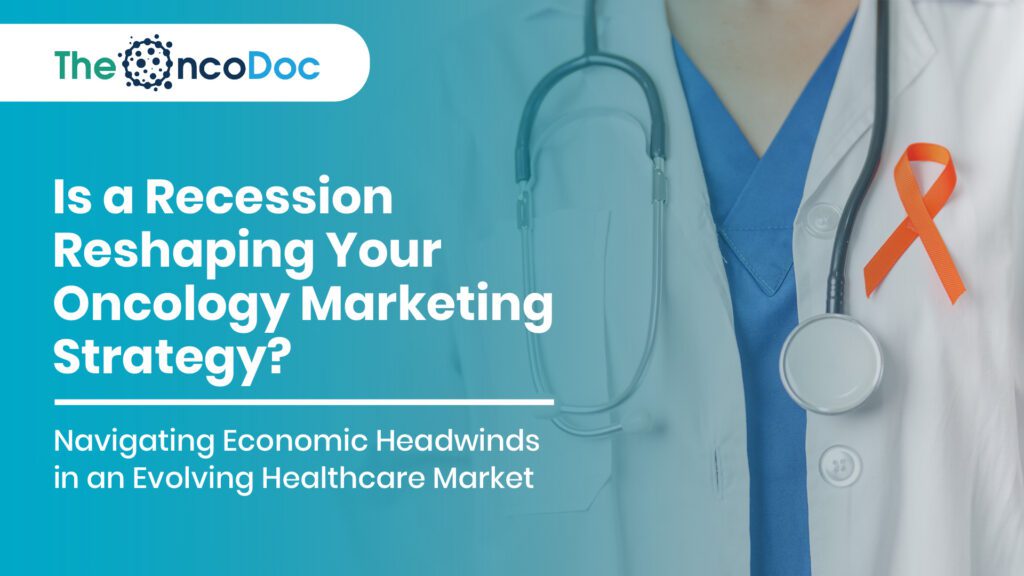Abstract
The medical oncology market, traditionally viewed as recession-resilient due to the non-discretionary nature of cancer care, is increasingly susceptible to broader macroeconomic forces. This article provides an in-depth, educational analysis of how current U.S. economic trends, including inflation, shifts in consumer spending, and evolving payer dynamics, are directly impacting medical oncology marketing. We dissect the ripple effects of these economic pressures on pharmaceutical companies, from budget allocation and pricing strategies to the crucial imperative of demonstrating value. Utilizing digital marketing analytics as our lens, we explore how marketers are adapting to these headwinds by prioritizing data-driven personalization, enhancing patient support programs, and optimizing their multichannel engagement models. This article is crafted for an audience of pharma managers and medical professionals, offering a strategic framework for not just surviving but thriving in a volatile economic climate, ensuring that critical oncology treatments continue to reach the right patients and providers effectively.
Introduction: When Macroeconomics Meets Micro-Medicine
In an ideal world, the marketing of life-saving medical treatments would be insulated from the fluctuations of the global economy. For decades, medical oncology has been a cornerstone of this view. The high unmet needs in cancer care, combined with the often-urgent nature of treatment decisions, have historically shielded the sector from the deep cuts and strategic shifts seen in other industries during economic downturns. However, the current economic landscape is proving this traditional wisdom to be a fallacy. A confluence of persistent inflation, rising interest rates, and evolving consumer and payer behaviors is now forcing a reevaluation of established marketing practices, even in the oncology space.
This article is a guide for pharma managers seeking to understand and adapt to this new reality. We will not dwell on political or market speculation, but rather focus on the measurable impacts of these trends on marketing strategy and execution. By examining the interplay between economic forces and marketing analytics, we aim to provide a pragmatic roadmap. We will explore how a greater emphasis on digital channels, a data-driven approach to patient-centricity, and a renewed focus on demonstrating tangible value are becoming strategic imperatives. The goal is to move beyond simply acknowledging economic challenges to actively leveraging digital tools to maintain and enhance brand relevance, patient trust, and market share in a more constrained and competitive environment.
Part I: The Economic Headwinds Impacting Oncology
The primary economic trends affecting the U.S. healthcare system today are not isolated events but interconnected forces that collectively reshape the environment for oncology marketing.
1. Inflation and Cost Pressures Across the Value Chain Persistent inflation is not just a consumer problem; it’s a supply chain challenge. For pharmaceutical companies, this translates to increased costs for raw materials, manufacturing, research, and logistics.
- Marketing Impact: As R&D and operational costs rise, marketing budgets face pressure. Managers are being asked to do more with less, which necessitates a shift from broad-based, high-cost campaigns (e.g., traditional broadcast media) to more targeted, cost-efficient digital strategies. The focus moves to channels with clearer ROI attribution, such as search engine marketing (SEM) and programmatic advertising.
- Analytics Focus: This environment elevates the importance of granular performance metrics. Marketers must track not just clicks and impressions, but cost-per-acquisition (CPA) and return on ad spend (ROAS) for every digital touchpoint. The goal is to identify and scale the most efficient channels, using A/B testing and multivariate analysis to optimize every dollar spent.
2. Payer and Patient Financial Strain Higher inflation and rising healthcare costs put a direct strain on payers, employers, and, most critically, patients. As health insurance premiums and out-of-pocket costs increase, the financial toxicity of cancer care becomes a more pressing concern.
- Marketing Impact: The conversation around oncology treatments can no longer be purely about clinical efficacy. Marketers must integrate messaging around value, affordability, and patient support. This requires the creation of educational content on insurance navigation, co-pay assistance programs, and financial counseling. Campaigns that ignore these patient-centric concerns risk appearing tone-deaf and can erode trust.
- Analytics Focus: Marketers use analytics to measure engagement with patient support content. Key metrics include click-through rates (CTR) on co-pay assistance links, form-fill conversions for patient support program enrollment, and webpage dwell time on financial resources sections of a brand’s website. Sentiment analysis on social media and patient forums helps gauge the effectiveness of this messaging and identify areas where patients are struggling.
Part II: Reshaping Marketing Strategy with Digital Analytics
Economic pressures are not a call to retreat, but a catalyst for strategic evolution. Digital marketing analytics, in particular, becomes the central nervous system of this new, data-driven approach.
1. The Strategic Pivot to Value-Based Messaging In a cost-conscious environment, a marketing campaign’s success is increasingly tied to its ability to demonstrate tangible value. This goes beyond clinical trial data to include real-world evidence (RWE), patient-reported outcomes (PROs), and quality-of-life improvements.
- Marketing Impact: Content marketing becomes paramount. Instead of relying solely on journal advertisements, marketers develop sophisticated digital content hubs featuring patient stories, videos from key opinion leaders (KOLs) on value propositions, and interactive tools that explain the long-term benefits of a therapy.
- Analytics Focus: The effectiveness of this content is measured by metrics like download rates for white papers and scientific posters, video completion rates for KOL interviews, and social shares of value-oriented content. Marketers can use attribution models to link engagement with this content to prescribing behavior, thereby proving the marketing’s impact on business outcomes.
2. The Optimization of Multichannel Engagement As budgets tighten, the traditional model of a large sales force is being re-evaluated. Marketers are moving towards a more optimized, multichannel engagement (MCE) model that blends in-person and digital interactions.
- Marketing Impact: Digital channels like webinars, virtual events, and personalized email journeys become crucial for engaging with HCPs. The goal is to provide a seamless, on-demand experience that respects the busy schedules of doctors and nurses while still delivering high-quality, up-to-date information. The sales force’s role shifts from a primary information delivery vehicle to a facilitator of deeper, more strategic relationships.
- Analytics Focus: The efficacy of the MCE model is measured through analytics that track the entire HCP journey. Metrics include email open and click rates, webinar attendance and Q&A participation, and sales call-to-digital engagement ratios. By integrating these data points, marketers can build a comprehensive view of which channels are most effective for each individual HCP, leading to more personalized and impactful outreach.
3. Leveraging Data for Hyper-Personalization Economic pressure makes mass marketing campaigns inefficient and risky. The solution lies in using data to hyper-personalize marketing messages, ensuring that the right content reaches the right audience at the right time.
- Marketing Impact: This involves segmenting HCPs and patients not just by specialty or disease state, but by their digital behaviors, information needs, and stage in the treatment journey. For example, a doctor who frequently attends webinars on a specific immunotherapy might receive an email with new data on that therapy, while a patient who has just been diagnosed might receive educational content on what to expect.
- Analytics Focus: The core of this strategy is predictive analytics and marketing automation. Tools are used to build audience segments, automate content delivery, and track the performance of personalized campaigns. Success is measured by metrics like lead score velocity, conversion rates on personalized content, and the reduction in marketing waste from untargeted campaigns.
Conclusion: A Strategic Imperative for a Dynamic Future
The notion that medical oncology marketing is immune to economic trends is no longer viable. Inflation, cost pressures, and a new emphasis on value and affordability are forcing a fundamental shift in how pharmaceutical companies operate. For pharma managers, this is a moment of challenge and immense opportunity. By embracing a data-driven, analytics-focused approach, they can navigate these economic headwinds and emerge stronger.
The future of oncology marketing is not about scaling back, but about scaling smartly. It is about using digital analytics to make every marketing dollar count, ensuring that every piece of content provides genuine value, and building trust by addressing the real-world concerns of both patients and providers. As the economic landscape continues to evolve, the ability to adapt with agility and precision will be the ultimate determinant of success.
The Oncodoc team is a group of passionate healthcare and marketing professionals dedicated to delivering accurate, engaging, and impactful content. With expertise across medical research, digital strategy, and clinical communication, the team focuses on empowering healthcare professionals and patients alike. Through evidence-based insights and innovative storytelling, Hidoc aims to bridge the gap between medicine and digital engagement, promoting wellness and informed decision-making.



